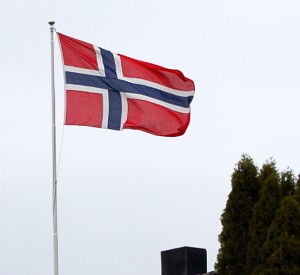Who might we expect to be more caring of migrants in need of health care than Norway, its welfare state renowned for comprehensive, cradle to the grave protection? Not so, it seems, if they are among the estimated 10,000 – 32,000 residents in Norway whose immigration status is irregular, whether adult or child. While law reform in Sweden extended irregular migrants’ access to health care in 2013, Norway’s trajectory since a rule change in 2011 has been the other way.
Emerging findings from a three year study on the provision of services to irregular migrants (PROVIR), shared at an Oxford round-table last week, revealed a child can be denied an operation by doctors required to take into account their possible removal from the country, notwithstanding that, with a further application pending, removal may never take place. Patients can be deterred from seeking care by the cost of consulting a GP or the questioning of sceptical administrative staff. Some defer seeking treatment until their legal status is confirmed. Others borrow a friend’s residence permit or choose a doctor with a foreign name, hoping to find a sympathetic ear – findings which will sound familiar to those who, like Médicins du Monde or PICUM, monitor access to care for irregular migrants in Europe. Doctors in Norway, as in other jurisdictions, do not welcome the intrusion of immigration factors into their clinical role.
The round-table took place because two PROVIR researchers from Uni Rokkansenteret at the University of Bergen had been visiting scholars at COMPAS in recent months. One of the rich rewards of academic life is this opportunity to share evidence and ideas across countries and disciplines, to tease out each other’s analysis and garner insights on a complex topic – here the tension between the formal exclusion of those without a legal right to stay and their simultaneous, formal inclusion through entitlements (albeit modest) to public services that they need.
Ranging from the application of social systems theory to the ethnography of migrants’ lived experiences, the discussion reinforced the truism that the complexity of migration can only be understood through an inter-disciplinary lens. Without political theory would we remember to interrogate notions of the monolithic or benevolent State, or the binary between ‘legal’ and ‘illegal’ immigration status which hides the many shades in between? Without empirically grounded anthropology would we see the fragility of an entitlement in law to health care which can be eroded (or indeed enhanced, as the Norwegian study has also found) by the service providers and administrative staff whose moral agency determines the reality of exclusion or inclusion on the day?
 The concept of ‘precarious inclusion’ used in the PROVIR project chimes with COMPAS’ own work on families with ‘No Recourse to Public Funds’ in the UK, Spain and Germany, itself exposing harsh examples of exclusion, and a further study on irregular migrants’ access to services across the EU; as it did with that of colleagues who joined us from the Universities of Birmingham and Madrid. Our collective focus has been on the most marginal, those most in need of support and hence most vulnerable to the shifting boundaries of the welfare state.
The concept of ‘precarious inclusion’ used in the PROVIR project chimes with COMPAS’ own work on families with ‘No Recourse to Public Funds’ in the UK, Spain and Germany, itself exposing harsh examples of exclusion, and a further study on irregular migrants’ access to services across the EU; as it did with that of colleagues who joined us from the Universities of Birmingham and Madrid. Our collective focus has been on the most marginal, those most in need of support and hence most vulnerable to the shifting boundaries of the welfare state.
Part of the PROVIR study explored the imagery used by civil society advocates to win public support for the inclusion of those without legal status, for the most part people whose application for refugee status has been refused. They resort to imagery of the vulnerable, helpless, exemplary victim, thus unwittingly de-contextualising individuals from the rest of their lives. Yet, sitting around that table in Oxford, we recognised that in our focus on the small minority of irregular migrants who need welfare support, we are ourselves reinforcing a distorted image: that ‘irregular migrant’ means ‘poor migrant’. Researching irregular migration provides an important vantage point for understanding the welfare state and its borders. But where is the study on irregular migrants who are in professional jobs or those from rich countries? The living reality of those individuals remain under our radar as scholars, it would seem, as well as under the radar of the immigration authorities.
